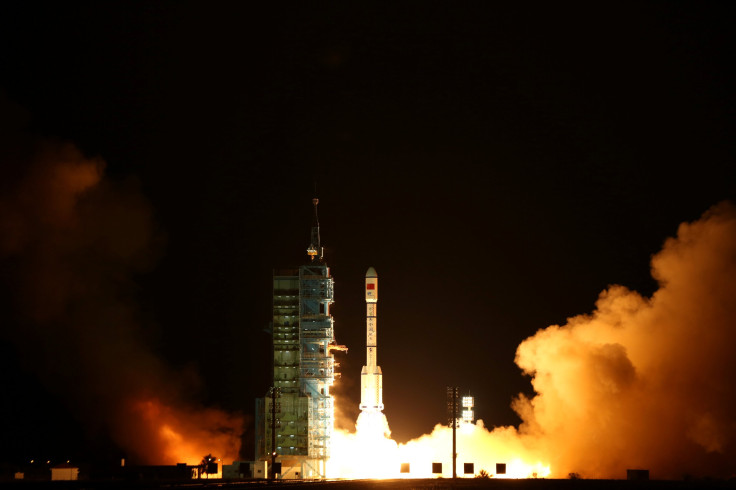What Is China’s Tiangong Program? Space Station Plan Strong Despite Tiangong-1 Failure

Ever since its failure was confirmed in late 2015, China’s Tiangong-1 spacecraft has been tracked by organizations to try determine where it will fall following reentry, expected to take place in the first week of April. While the loss of the module may have been a setback, it hasn’t stopped China from pursuing its ambitious goal of building its own space station, Tiangong.
Translating to “heavenly palace” from Mandarin, the Tiangong program is a bold one, considering China was a relative newcomer to the space race but has already established a habitable presence in orbit around Earth. Tiangong-1, before it failed, saw two visits by crews who spent time in the module, proving that it was habitable.
The Chinese are following the tested approach of building a space station one module at a time. Tiangong-1, launched in September 2011, was the first of those modules, followed by Tiangong-2, which has been in orbit since September 2016. A cargo spacecraft, Tianzhou-1 (meaning “heavenly vessel”), was also launched in April 2017, and it successfully docked with Tiangong-2, demonstrating the success of another key technology required to maintain an orbiting laboratory in space.
Tianzhou-1 has a payload capacity of up to six tons and can also refuel Tiangong-2. It performed two more dockings with Tiangong-2, one each in June and September 2017.
Two Chinese astronauts (they are called “taikonauts” locally) also spent 30 days aboard Tiangong-2 in October-November 2016. The module has space for two crew members, with its life-support systems sufficient to sustain them for 30 days.
There was also talk of launching Tiangong-3, but the aims of that mission were merged with Tiangong-2.
However, the core of the planned space station, Tianhe-1 (“heavenly harmony”), is currently scheduled to be launched sometime in 2019, delayed from 2018. This module would have room for three crew members, and also house the main control center. Along with power, navigation, communication, and life support systems, the module would also have a docking station and a small robotic arm. Power-generation would rely on two movable solar panel arrays.
Two laboratory modules are also planned, possibly to be launched sometime between 2020 and 2022. Tentatively called Wentian (“quest for the heavens”) and Mengtian (“dreaming of the heavens”), they will provide space for researchers to carry out experiments under varying pressure conditions, including zero-gravity. The two modules would also dock with Tianhe-1.
But before launching any of these modules, China needs to gets its launch system in order. Its most powerful rocket, Long March-5, failed its second test launch in July 2017, after a successful maiden test in November 2016. The rocket can carry a payload of up to 25 tons to low-Earth orbit, and is critical to China’s space exploration projects. Both Tianhe-1 and the two lab modules are scheduled to launch on Long March-5 rockets, as are other missions like those to return lunar samples to Earth and an orbiter and rover for Mars.
If the delivery-to-orbit mechanism is put in place quickly, the Chinese space station, called Tiangong, may become a reality by 2023. It would be permanently inhabited, like the International Space Station, with each mission lasting six months.
A planned Chinese space telescope — Xuntian (“heavenly cruiser”) — is also scheduled for launch around 2022, and it would have an orbit near the country’s space station.
© Copyright IBTimes 2025. All rights reserved.



















